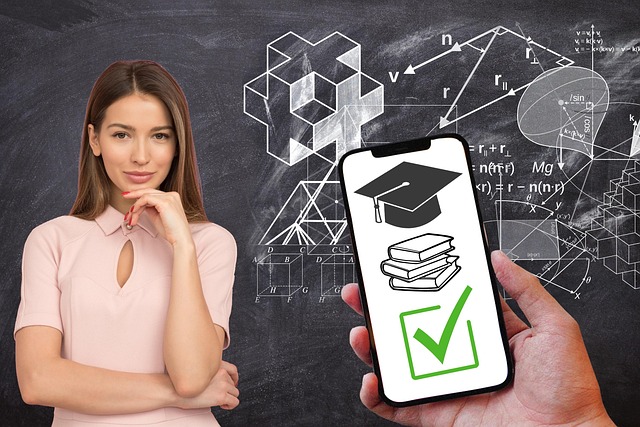Online learning has evolved from a supplemental tool into a primary mode of education for millions worldwide. The promise of flexible schedules, access to diverse resources, and the ability to reach remote learners is matched by the need for robust outcomes. When designing virtual courses, educators must prioritize interaction as a catalyst for meaningful knowledge building. By weaving discussion, collaboration, and reflection into the curriculum, online learning outcomes shift from passive content consumption to active, skill‑driven mastery.
Defining Online Learning Outcomes
At its core, an online learning outcome is a clear, measurable statement describing what a learner will know, feel, or be able to do after completing a learning experience. Effective outcomes incorporate cognitive, affective, and psychomotor domains, and they set the stage for all instructional decisions. In the digital realm, these statements must also account for the unique affordances and constraints of virtual environments.
Key Elements of Strong Outcomes
- Specificity – Avoid vague verbs; choose observable actions.
- Measurability – Include criteria that can be assessed reliably.
- Relevance – Align with course objectives and real‑world application.
- Feasibility – Ensure tasks are achievable within the course time frame.
Interaction as the Engine of Knowledge Building
Interaction goes beyond chat boxes or discussion boards. It is a multi‑layered engagement that fosters critical thinking, problem solving, and metacognition. When learners negotiate meaning, share perspectives, and receive timely feedback, they move from surface learning to deep understanding. The following strategies illustrate how interaction can be intentionally embedded to enhance online learning outcomes.
Collaborative Projects
Group assignments that require joint research, synthesis, and presentation promote shared responsibility. By assigning rotating roles—facilitator, recorder, researcher—students experience different facets of teamwork, which strengthens communication skills and collective knowledge construction.
Peer‑Review Loops
Structured peer assessment encourages learners to critique and support one another. Through guided rubrics and reflection prompts, students articulate feedback that clarifies concepts for both the reviewer and the original author. This cyclical process reinforces learning outcomes by exposing gaps and reinforcing mastery.
Live Synchronous Sessions
Short, focused live discussions provide immediacy and accountability. Incorporating breakout rooms for micro‑collaboration followed by a plenary synthesis helps maintain momentum and ensures that the conversation translates into collective insight.
Assessment Strategies Aligned with Interaction
Assessment is the vehicle that measures whether online learning outcomes are achieved. Interactive assessments shift the focus from rote memorization to application and synthesis.
Formative Micro‑Assessments
Embedded quizzes, quick polls, or exit tickets offer instant feedback. By analyzing responses in real time, instructors can adjust pacing or revisit misconceptions, thereby supporting ongoing achievement of outcomes.
Portfolio Development
A curated collection of artifacts—reflection essays, project reports, multimedia presentations—demonstrates progression. Portfolios require learners to articulate how each piece evidences their mastery of the defined outcomes.
Performance‑Based Tasks
Simulations, case studies, or role‑plays demand that learners apply knowledge to realistic scenarios. These tasks are particularly effective when paired with reflective journals that capture the reasoning process.
Technological Enablers of Interaction
Choosing the right tools can amplify interaction, but technology must be leveraged thoughtfully. The following platforms and features support the intentional design of interactive learning experiences.
Discussion Platforms with Threaded Structure
Tools that allow nested replies and tagging help maintain coherent conversations, especially in large cohorts. Threading enables learners to build on each other’s ideas systematically.
Collaborative Workspaces
Cloud‑based document editors, whiteboards, and shared repositories enable real‑time co‑creation. Integration with version control systems gives learners visibility into the evolution of their collective work.
Analytics Dashboards
Visibility into participation metrics (e.g., number of posts, response times, engagement scores) empowers instructors to intervene proactively. When used constructively, analytics inform personalized support and reinforce accountability.
Challenges and Mitigation Strategies
Despite its benefits, fostering interaction in online settings presents obstacles. Recognizing and addressing these barriers ensures that learning outcomes remain attainable.
Digital Fatigue
Extended screen time can diminish participation. Mitigation includes breaking sessions into manageable segments, varying interaction modalities, and incorporating brief movement or mindfulness pauses.
Equity of Access
Not all learners have reliable bandwidth or conducive learning environments. Offering asynchronous alternatives, low‑bandwidth options, and asynchronous discussion windows can level the playing field.
Instructor Workload
Facilitating active interaction demands significant time. Employing peer moderation, leveraging AI‑assisted grading, and delegating facilitation responsibilities can distribute the workload effectively.
Best Practices for Maximizing Interaction‑Driven Outcomes
When designing an online course, these actionable guidelines can help align interaction with learning outcomes.
- Start with clear outcomes. Map every interactive element to a specific learning goal.
- Introduce early, scaffold gradually. Begin with low‑stakes, synchronous ice‑breakers before moving to complex group tasks.
- Encourage reflection. Prompt learners to articulate how interaction helped them reach the outcomes.
- Provide timely feedback. Use automated tools for quick checks and schedule personal feedback for deeper insights.
- Iterate based on data. Use analytics to refine interaction designs over successive iterations.
Conclusion: Toward Meaningful Online Learning
When online learning outcomes are anchored in intentional interaction, the virtual classroom transcends the boundaries of content delivery. Learners become co‑constructors of knowledge, and educators shift from transmitters to facilitators. By embedding collaboration, peer review, and reflective practices into every module, we not only measure success but also cultivate the skills needed for lifelong learning. The future of education hinges on this synergy—between technology, pedagogy, and human connection—ensuring that online learning outcomes truly reflect the depth, breadth, and application of knowledge in an ever‑changing world.




